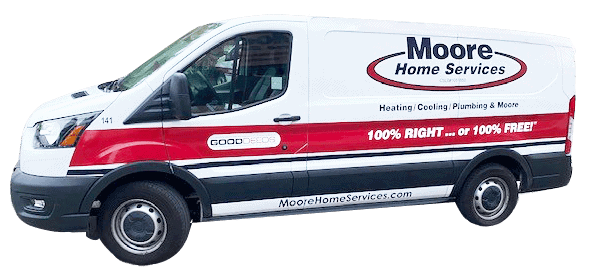What are the Main Types of Home Heating Systems?
Posted by Moore Home Services
HVAC Basics
It appears that every year there are new advancements in the world of home heating. The first central heating system was patented in 1919 and resembled a gigantic octopus that lived in your basement. Now, modern homeowners have options. Furnaces can be as big or as small as your home requires. You may even find that a furnace can even be too big or too small for your current space. We understand how easy it is to be confused by all the different types of home heating systems on the market. Because of this, we’re sharing the most common types, the pros, the cons, and anything else Santa Rosa homeowners need to know.
Central Air or Furnace
Central air, or furnace systems, are the most
common form of central heating in North America. This familiar home heating system is powered by two essential parts: The furnace and the blower fan. The furnace itself heats ambient air and the blower motor distributes said treated air through a home or centralized location.
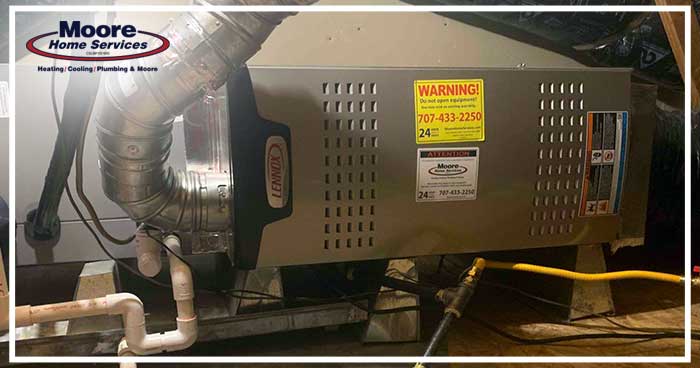
What makes these appliances so common and so easy to set up in modern homes are that they are powered by natural gas, propane, fuel, oil, or electricity. Though they can be placed almost anywhere in a home, they’re usually found most commonly in the garage, attic, or a utility closet. The reason why central air systems are so common is because they can be incredibly energy efficient. The efficiency level all depends on the make and model you have installed.
There are a few things to consider before investing in a
central air system. If your home does not have any pre-existing central air system, you will need to install ductwork throughout your home. Ducts are a series of aluminum tubes that transport heat treated air from your furnace to the rest of your home. Your ductwork can live in your walls, your attic, or basement.
Heat Pump
Of all the items on this list, heat pumps are the most recent development. First introduced because of the oil crisis in the 70s, although heat pumps generate warm air, they often function like an air conditioning system. They extract the heat from the outside air and to treat it with a refrigerant coolant with when compressed increases the temperature, then send it through the indoor unit of the heat pump which then air passes through and is distributed throughout your home.
Since heat pumps use refrigerant to warm your air, they can pull the coldest of outdoor air and make it nice and warm for a cozy night in. Their reliance on refrigerant instead of gas makes them incredibly efficient.
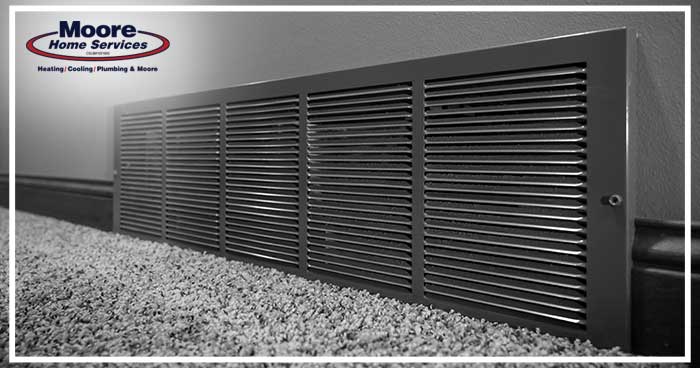
Though heat pumps are similar to the mini-split system, they have a few key differences. The biggest being that heat pumps
don’t need any gas to operate. Instead, they are powered through electricity. This alone can have a big difference on your electric bill. The only caveat is that heat pumps are not made for climates that dip below freezing. Lucky for everyone involved the communities we serve hardly see a day below 37 degrees.
Ductless or Mini-Split
While the heat pump system is completely different from the home heating systems you’re used to, the ductless or
mini-split system has more than a few similarities.
A mini-split system has an outdoor and indoor component. The condenser/compressor lives outside the home. Inside the system is an air handler that distributes treated air to a specific room or area. If your home is larger, you have the option of
connecting multiple air handlers to one condenser. Meaning different areas, or zones, of the home can have different temperature options.
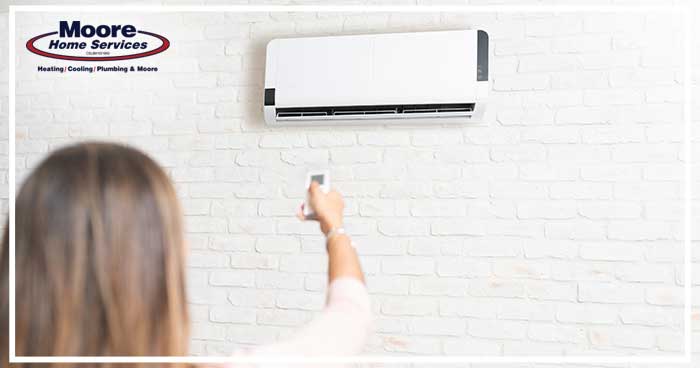
The beauty of ductless systems is that if your home does not currently have a central heating and air system, a ductless unit can give you benefits of a central system without having to tear up your walls. Though this may sound like a great option, the initial price tag of a ductless or mini-split home heating system can turn some people off.
Boiler or Radiation Distribution System
Does anyone still have a home with a cast iron radiator in it? As time goes one, we’re seeing less home with them, but there are still homes—and apartment buildings—operating off boilers.
When a home is heated with a boiler, it uses hot water instead of hot air to generate heat. The boiler brings in natural cool water, heats it, then distributes the warm steam to any radiators throughout the building. In addition to radiators, a boiler system can be used for radiant flooring, which sounds perfect for winter months.
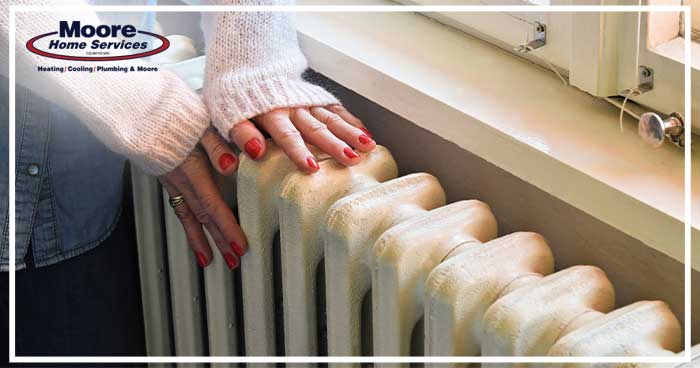
The biggest drawback to a boiler system is that they are very old type of heating and air system, which means they’re not at the height of efficiency or technology anymore. Another drawback is they take a lot of time to heat a whole home, so you’re stuck in the cold for a bit after it’s powered on.
Want to Learn Which Home Heating System is Right for You?
Our expert HVAC technicians are on hand ready to help you find the perfect solution for your home and lifestyle needs. When options are limitless, we’re here to help you make the right one. Dial the number at the top of the screen to speak with one of our friendly call center representatives. Or
click here to book an appointment online. Moore Home Services proudly works with our Santa Rosa, Sonoma County, and North Bay communities.
 What makes these appliances so common and so easy to set up in modern homes are that they are powered by natural gas, propane, fuel, oil, or electricity. Though they can be placed almost anywhere in a home, they’re usually found most commonly in the garage, attic, or a utility closet. The reason why central air systems are so common is because they can be incredibly energy efficient. The efficiency level all depends on the make and model you have installed.
There are a few things to consider before investing in a central air system. If your home does not have any pre-existing central air system, you will need to install ductwork throughout your home. Ducts are a series of aluminum tubes that transport heat treated air from your furnace to the rest of your home. Your ductwork can live in your walls, your attic, or basement.
What makes these appliances so common and so easy to set up in modern homes are that they are powered by natural gas, propane, fuel, oil, or electricity. Though they can be placed almost anywhere in a home, they’re usually found most commonly in the garage, attic, or a utility closet. The reason why central air systems are so common is because they can be incredibly energy efficient. The efficiency level all depends on the make and model you have installed.
There are a few things to consider before investing in a central air system. If your home does not have any pre-existing central air system, you will need to install ductwork throughout your home. Ducts are a series of aluminum tubes that transport heat treated air from your furnace to the rest of your home. Your ductwork can live in your walls, your attic, or basement.
 Though heat pumps are similar to the mini-split system, they have a few key differences. The biggest being that heat pumps don’t need any gas to operate. Instead, they are powered through electricity. This alone can have a big difference on your electric bill. The only caveat is that heat pumps are not made for climates that dip below freezing. Lucky for everyone involved the communities we serve hardly see a day below 37 degrees.
Though heat pumps are similar to the mini-split system, they have a few key differences. The biggest being that heat pumps don’t need any gas to operate. Instead, they are powered through electricity. This alone can have a big difference on your electric bill. The only caveat is that heat pumps are not made for climates that dip below freezing. Lucky for everyone involved the communities we serve hardly see a day below 37 degrees.
 The beauty of ductless systems is that if your home does not currently have a central heating and air system, a ductless unit can give you benefits of a central system without having to tear up your walls. Though this may sound like a great option, the initial price tag of a ductless or mini-split home heating system can turn some people off.
The beauty of ductless systems is that if your home does not currently have a central heating and air system, a ductless unit can give you benefits of a central system without having to tear up your walls. Though this may sound like a great option, the initial price tag of a ductless or mini-split home heating system can turn some people off.
 The biggest drawback to a boiler system is that they are very old type of heating and air system, which means they’re not at the height of efficiency or technology anymore. Another drawback is they take a lot of time to heat a whole home, so you’re stuck in the cold for a bit after it’s powered on.
The biggest drawback to a boiler system is that they are very old type of heating and air system, which means they’re not at the height of efficiency or technology anymore. Another drawback is they take a lot of time to heat a whole home, so you’re stuck in the cold for a bit after it’s powered on.

